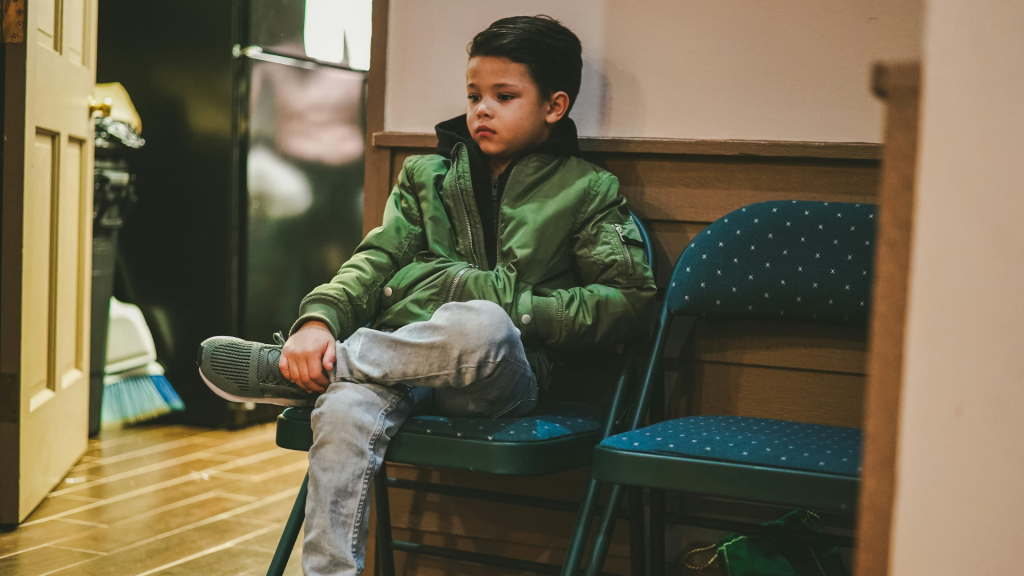
Introduction
For people witnessing observing the effects of FDV from afar, it’s a common question “Why don’t they just leave?”
But for those within the FDV relationship, it is rarely as simple as packing a bag and going to a motel. For many, the dynamics of abuse have been present for a long time in the relationship by this stage; the emotional, mental and financial independence of the victim-survivor has been worn down.
With children, leaving the relationship becomes more complicated. People in FDV relationships may feel conflicted between allowing the other person to have custody or visitation rights of their child, and cutting the parent out of their child’s life completely – especially if they feel that the child doesn’t fully understand FDV, or that their child hasn’t been affected.

Split Custody and Post-Separation Abuse
In Australia, family courts prioritise the interests of the child when deciding custody. The vast majority of custody arrangements are determined outside of court by the parents; however, out of the cases that go to court, the most common custody agreement in Australia is split custody, with the children spending time with their mother 66-86% percent of the time, and with their father 14-34% of the time.
Custody arrangements where the child stays with the mother all the time make up 9% of court-decided arrangements; custody agreements where the father has sole responsibility make up 1% of court-decided arrangements. The vast majority of custody agreements require coordination between the two parents – scheduling, school pick-ups and drop-offs, family holidays.
For FDV perpetrators, this mandated contact between parents can be another pathway to control the other partner’s life, even after the relationship has ended. This phenomenon is often called post-separation abuse.
As outlined in the 2022 report “Post-separation abuse: a concept analysis”, post-separation abuse is “perpetrated at the individual level but facilitated and perpetuated by factors at the family (power differentials between intimate partners, stigma), community (legal system responses) and societal level (gender and patriarchal norms)”. Put simply, post-separation abuse is where an abuser uses the court system and people in their community to continue abusing the victim-survivor.
Legal Loopholes and Gaps in the System
The inadequacy of the legal system in dealing with the complexity of FDV is well-established. The court relies on documented evidence, reliable witnesses and competent legal representation to consider all aspects in a cases. All of these expectations can be problematic, as FDV victim-survivors are likely to under-report abuse, hide the abuse from their loved ones and may not have the financial resources to afford good legal representation.
The “Family Violence – A National Legal Response (ALRC Report 114)”, launched in 2010, outlines the difficulty in giving evidence for many FDV victim-survivors. Professor Patricia Easteal stated that many victim-survivors of FDV, and those outside the relationship, view instances of violence as single incidents, rather than part of a complex pattern of abuse.
It is easier for outsiders to understand an instance of violence as the abuser “just losing their temper” or “making a mistake”, than it is to understand the mentality of a person who has been worn down into accepted being assaulted.
This framing of physical violence as an isolated incident can make it difficult for the victim-survivor to give evidence in court later. Due to feelings of shame, embarrassment or responsibility, a victim-survivor will often hide or downplay injuries from physical abuse. The courts rely on things like police reports, witness statements and evidence of injuries to determine whether physical abuse has occurred – these things are impossible to produce if the victim-survivor has not told anyone about the abuse when it happened. Emotional abuse and coercive control can also be difficult to prove in a court, as there may not be obvious signs or tangible evidence.
Abusers can often use the courts to continue abuse after the relationship has ended. Making frivolous accusations and drawing out the legal are common ways to force the victim-survivor to spend their money on legal fees and take time away from work. Refusing to cooperate with court orders, or refusing to pay child support are also ways to taunt the victim-survivor, and keep them in the legal system.
Children in Court
The family court system in Australia prides itself on providing the best outcome for children in the relationship but can fail to account for all the forms of harm that FDV entails. Adults who dealt with family court as children reported feeling unheard or disconnected from the proceedings which would shape their lives. One man, who spent 7 years in family court as a child, recounted in the 2022 report “They thought it was safe – but it wasn’t” Recognising children’s rights as a means of securing children’s safety in Australia’s family law system” that the Independent Children’s Lawyer refused to speak to him.
The stress of repeated court filings can impact the relationship between the children and the victim-survivor. Another person in the same 2022 report revealed the impact of the financial strain of family court on her mother. Anna* remembers “…mum was very angry and very inconsistent with me. But I think she would not have been like that if family court was not happening. If the court had just said in the first place, ‘Look, your dad’s really dangerous, don’t see him,’ she would have been a lot more settled and not under the same financial pressure. So, I think that we would have had a much better upbringing.”
Parental alienation is defined as one parent trying to damage the child’s relationship with the other parent; common methods are making negative comments to the child about the other parent, encouraging the child to spy on the other parent and limiting the child’s time with the other parent against the custody agreement. This is often a part of post-separation abuse, used as a way to hurt the other parent. This can be quite difficult to prove in court and can be perpetrated intentionally or unintentionally.
Lastly, when going to family court, some abusers will only fight for custody to maintain contact with the victim-survivor. The child or children in this scenario are often neglected or ignored while they’re staying with the FDV perpetrator. This prevents the child from spending time with a loving parent, and can make the child feel that their wellbeing wasn’t considered in the family court. Experiences recounted in the “They thought it was safe – but it wasn’t” Recognising children’s rights as a means of securing children’s safety in Australia’s family law system” report found that the court prioritised the rights of the FDV perpetrator to be a parent, over the child’s interest.

What Is Being Done?
The mission to make family courts fairer for victim-survivors of FDV is ongoing. Though we can often identify common behaviours in many FDV relationships, the dynamic of abuse in each FDV relationship is deeply complex and personal.
- The Family Law Amendment Act 2023 came into affect on the 6th of May 2024, which aims to prioritise child safety in custody arrangements, over shared custody in family court. This Act also focuses on the harm of repeat court filings, a common trick for abusers.
- The Family Law Amendment (Parenting Management Hearings) Bill 2017 proposed bringing a multi-disciplinary panel into FDV cases, including experts in family law, dispute resolution, family violence, psychology, and child development. This amendment did not pass, and was opposed by the Law Council of Australia for adding unnecessary complexity into family courts.
- New South Wales has an online Sexual Assault Reporting Option (SARO), which does not start a criminal investigation, but keeps a record of your report. Filing a SARO online also means you do not need to speak directly to a police officer. This concept may be a good approach to documenting incidents of FDV in the lead-up to separation, without forcing the victim-survivor to start a criminal investigation.
